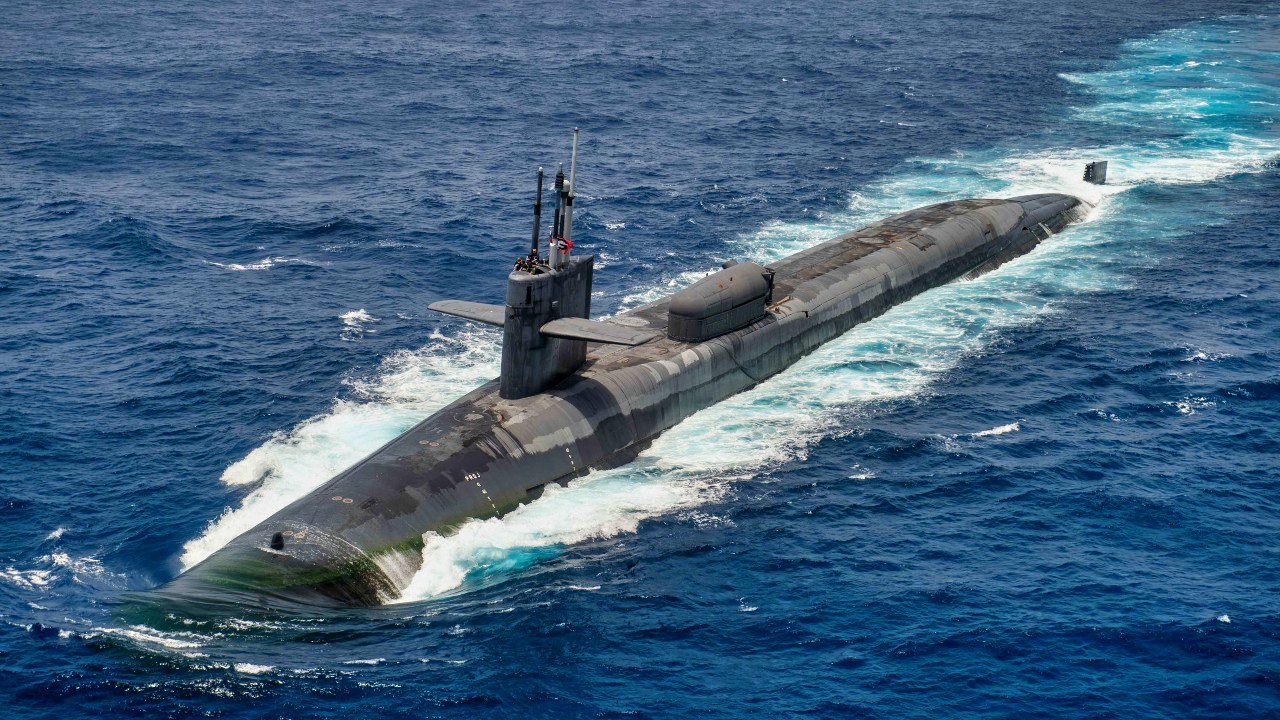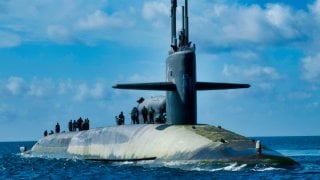The End of the Ohio-Class SSGN Submarines Is Big Trouble for the Navy
The U.S. Navy plans to retire four Ohio-class SSGNs between 2026 and 2028, raising concerns about a potential missile gap with China. Originally designed as ballistic missile submarines during the Cold War, four Ohios were converted to guided missile submarines capable of carrying 154 Tomahawk missiles each.
Summary: The U.S. Navy plans to retire four Ohio-class SSGNs between 2026 and 2028, raising concerns about a potential missile gap with China. Originally designed as ballistic missile submarines during the Cold War, four Ohios were converted to guided missile submarines capable of carrying 154 Tomahawk missiles each.
-These submarines also support special forces operations and serve as underwater command centers.
-Their retirement is part of the broader strategic adjustments post-Cold War, where the U.S. reduced its submarine ballistic missile force. However, with the current pace of producing the new Block V Virginia-class submarines, which carry fewer missiles, there is a projected shortfall in missile capacity. This transition highlights challenges in maintaining U.S. undersea and strategic missile capabilities during a critical period of naval modernization.
U.S. Navy to Retire Ohio-Class Subs, Facing Missile Gap with China
The U.S. Navy is planning to retire two Ohio-class SSGNs (guided missile submarines) in 2026 and two more in 2028. The retirements could exacerbate the missile gap between the United States and China.
While the Block V Virginia-class fast attack submarines can be outfitted with four vertical launch tubes (and 28 TLAMs), the Navy will still experience a shortfall once the Ohio-class SSGNs are taken offline.
Cold War Conversions
The SSGN Ohio-class submarines in question were converted to guided missile submarines during the Cold War, expanding their tactical profile. Each Ohio SSGN can carry up to 154 Tomahawk missiles while supporting special forces operations and serving as an underwater joint command center thanks to advanced communications systems.
The Ohio is an important part of the U.S. nuclear deterrence strategy, which relies upon the “nuclear triad.” The nuclear triad consists of, naturally, three components. One is the U.S. Air Force’s land-based intercontinental ballistic missiles. Two, the USAF’s strategic bombers. And three, the U.S. Navy’s ballistic missile submarines. The Ohio has been a crucial part of the nuclear triad, providing the Navy with a reliable, nuclear-armed submarine.
Introducing the Ohio
Built to allow for extended patrols, the Ohio was designed in the 1980s as the Cold War was climaxing. Large and quiet, the Ohio could lurk in waters undetected, ready to launch a nuclear strike if called upon. Yet, after the Soviet Union collapsed and the Cold War ended, Washington reevaluated its military spending. In 1994, the Department of Defense completed a Nuclear Posture Review. The verdict: the United States could reduce its submarine forces to just fourteen ballistic missile submarines. And because the United States already had eighteen SSBNs, four were converted to SSGNs—the Ohio-class subs about to be retired.
The SSGN is capable of carrying 154 Tomahawk land attack missiles. However, the SSGN is a versatile platform; the SSGN can also carry torpedo-tube-launched Harpoon anti-ship missiles. Or the sub can be outfitted to enable special forces operations—with torpedo tubes that have been converted into swimmer lockout trunks. The SSGN Ohio-class is also capable of deploying a Dry Combat Submersible, a miniature submarine that special forces use for stealthy underwater transportation.

Each Ohio SSGN costs $3.53 billion in 2023 dollars. Measuring 560 feet long, with a forty-two-foot beam and a thirty-five-foot draft, the Ohio displaces nearly 19,000 tons when submerged. The vessel relies on one S8G PWR nuclear reactor and two geared turbines capable of generating 35,000 horsepower and a top seed of twenty-five knots when submerged.
Headed for the Scrapyard
Two Ohio SSGN retirements are slated for 2026. Then, the remaining two Ohio SSGNs will be retired in 2028, effectively eliminating the class. The retirements will create a reduction in missile strength, as the Block V Virginia-class submarines, which are expected to mitigate the missile loss, have been slow to produce.
Current projections hold that the Virginia will not be produced sufficiently to replace the missiles lost in the Ohio retirement until the 2040s or so.
About the Author: Harrison Kass
Harrison Kass is a defense and national security writer with over 1,000 total pieces on issues involving global affairs. An attorney, pilot, guitarist, and minor pro hockey player, Harrison joined the US Air Force as a Pilot Trainee but was medically discharged. Harrison holds a BA from Lake Forest College, a JD from the University of Oregon, and an MA from New York University. Harrison listens to Dokken.
Image: U.S. Navy Flickr.


